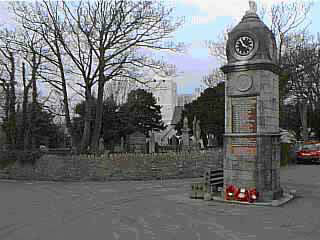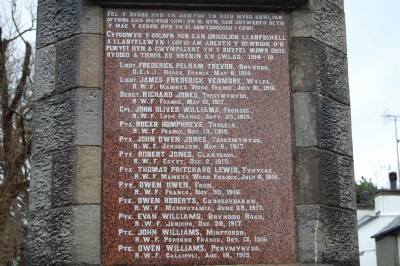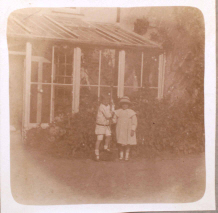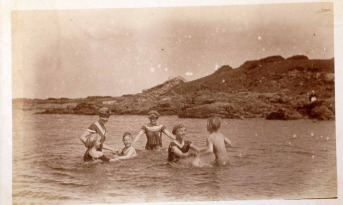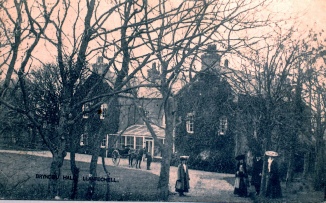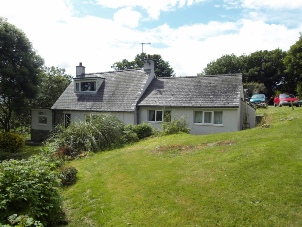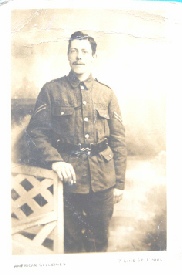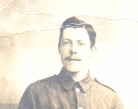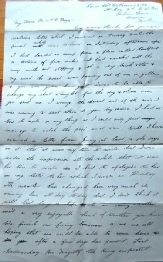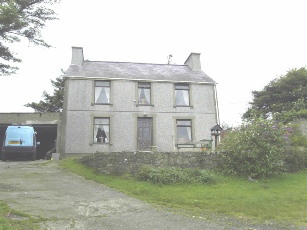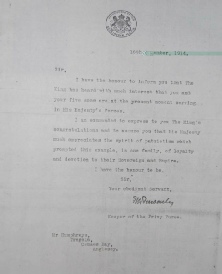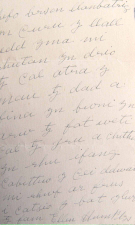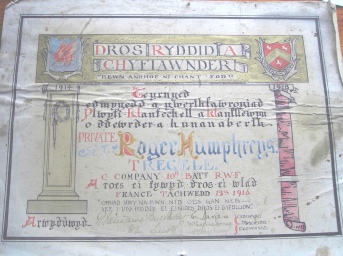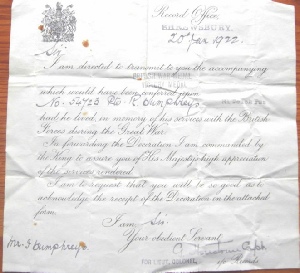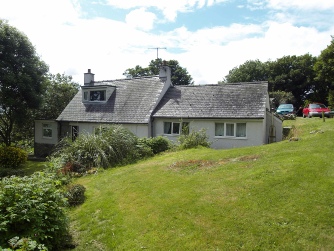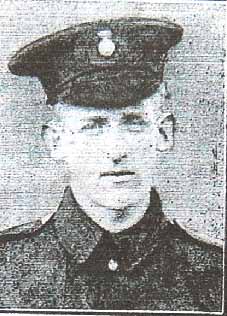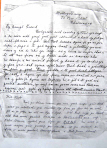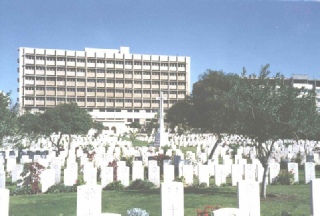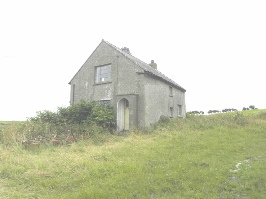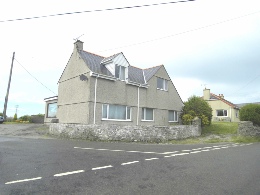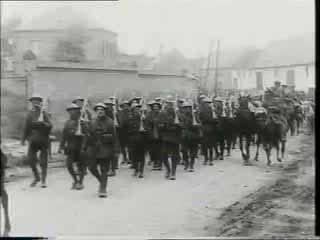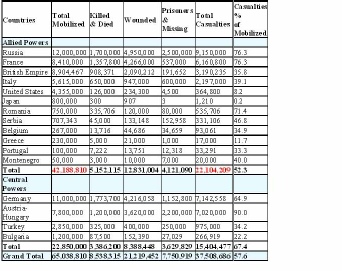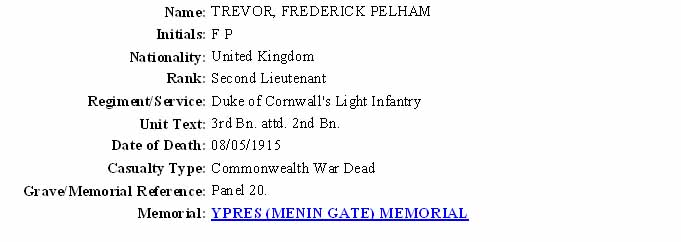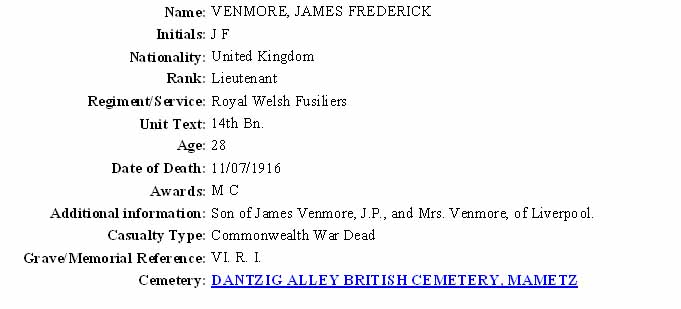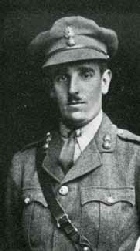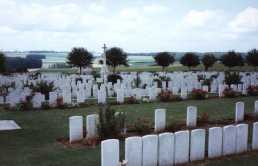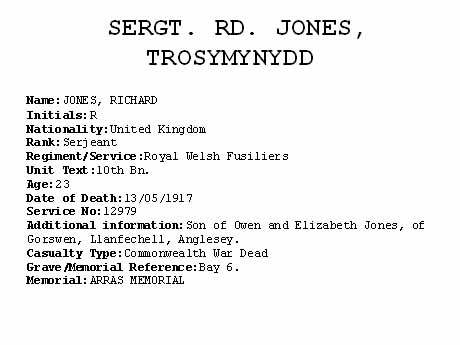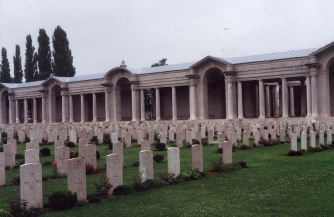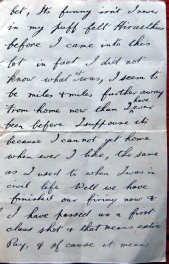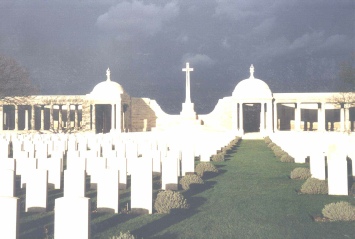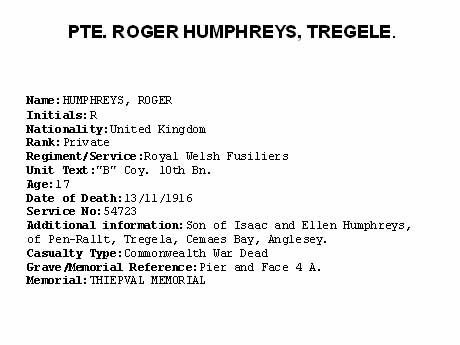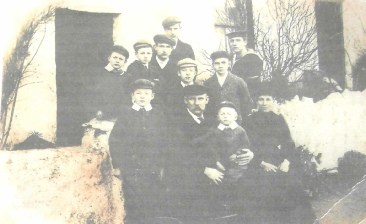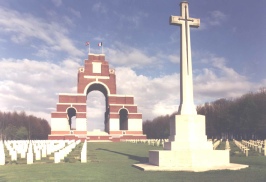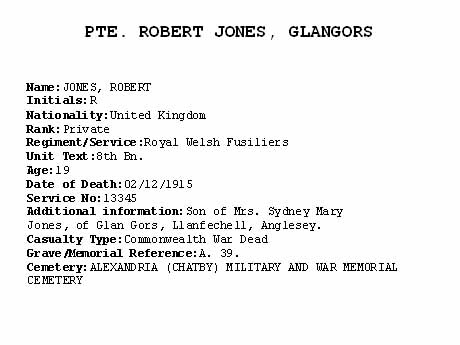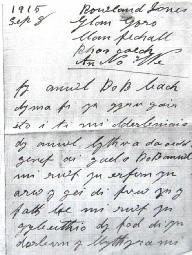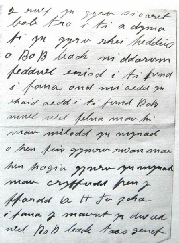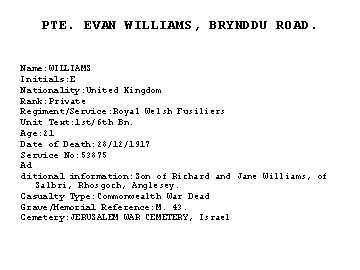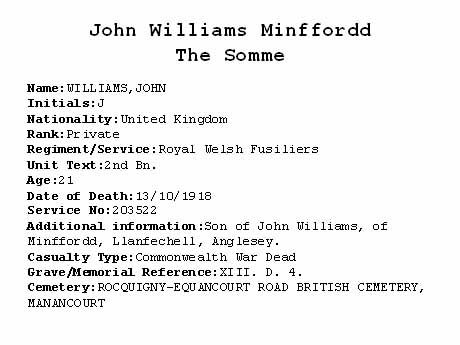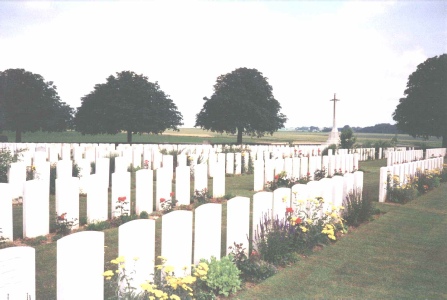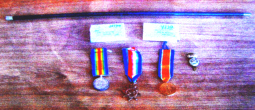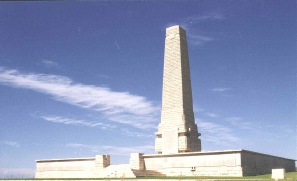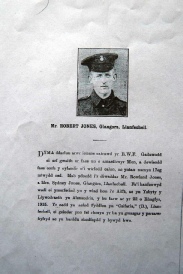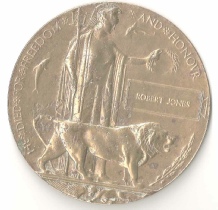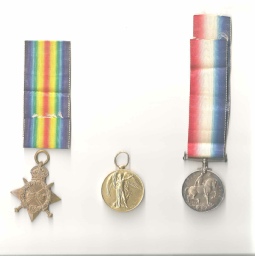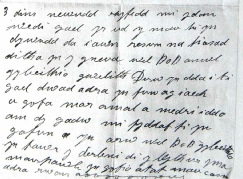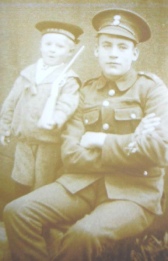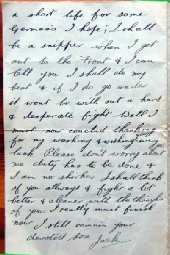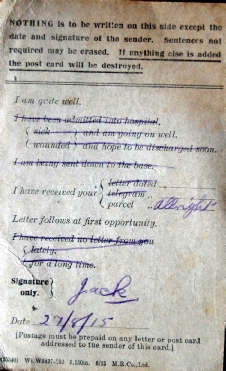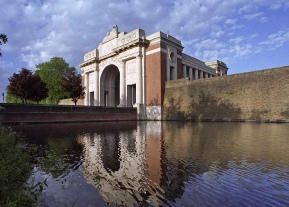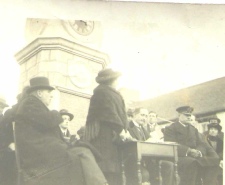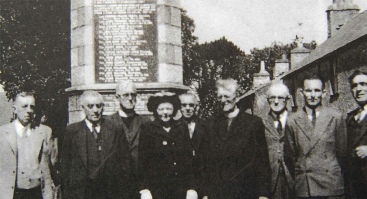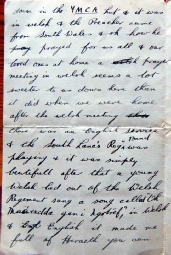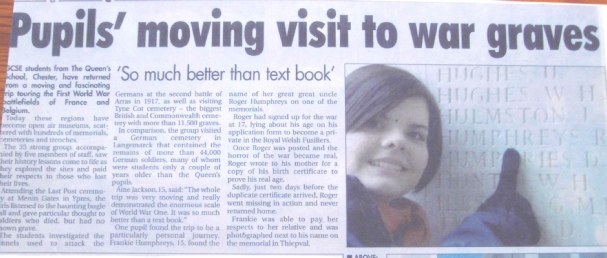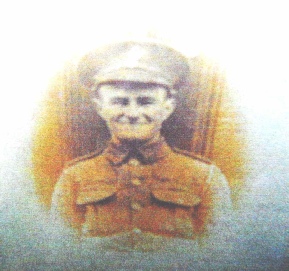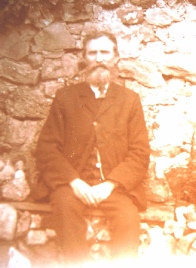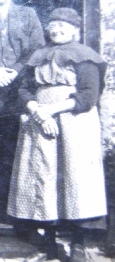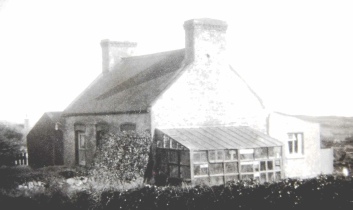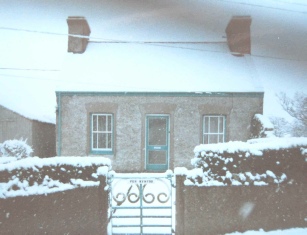
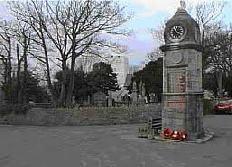
Cymdeithas Hanes Mechell

The Demography of Llanfechell 1851 & 1901
William Bulkeley and the poor of Llanfechell
Llanfechell in the early 19th Century
Llanfechell Memorial
with thanks to Mrs Iola Roberts, Mrs Beryl Jones, Mr Nigel Thomas & Mr Robert Williams
********************************************
Click on photographs to see larger versions
Unveiling ceremony after The First World War
Unveiling ceremony after The Second World War
*********************************************************************
*******************************************
The First World War 1914-
|
|
Click on the names for more information
********************************************
Frederick Pelham Trevor was born in Peru, Chile on 17th November 1879. He married Winifred Mills and they had two children, Meriol Trevor and Arthur Trevor. The family lived at Brynddu during the period before he went to war in 1915.
His family at Brynddu, 1911
The family Swimming at Cemaes, 1911
Brynddu, His home before he went to war
Menin Gate Cementary where he was buried
Lieutenant J. Frederick Venmore, the son of Mr James Venmore, a Liverpool citizen and a Justice of the Peace of the city and an Ex. High Sheriff of Anglesey.
He was educated at the Liverpool College and Mill Hill School, London. He subsequently studied architecture at Liverpool University and was engaged in that profession until, at the outbreak of War, he enlisted as a private in the 3rd Battalion of the Liverpool ‘Pals’. He received a commission in the 14th Battalion Royal Welsh Fusiliers and proved himself a most capable and popular officer, greatly beloved by officers and men alike for his bravery and devotion in the field.
The following is a description of how Lieutenant Venmore won the Military Cross for conspicuous bravery. ‘On the night of January 30th, 1916, Lieutenant Venmore was on duty as patrol officer in front of the British trenches in France, when a sentry in the firing trench reported that three men in an advanced listening post had been wounded. Two of these men were just able to crawl back to the British lines over the barbed wire, but the third man was too seriously wounded to follow, being shot through both legs. Lieutenant Venmore volunteered to go to his assistance, and took with him a non commissioned officer (Corporal William Williams, a Caernarfon man), who was awarded the Distinguished Conduct Medal.
They went out under heavy fire over the parapet, and after great difficulty brought in the man over the wire and two ditches. This brave action was succeeded by a further gallant act on the following morning, when a message was received that a man had had his arm blown off at another listening post, practically unapproachable by daylight. Lieutenant Venmore again undertook to go to his aid, once more taking with him Corporal Williams. They crawled across the open ground in the face of heavy machine gun fire. The sufferer was reached, his wounds attended to, and he was subsequently bought to safety. Both the officer and his companion were most highly congratulated by the brigade and divisional officers.
Unhappily Lieutenant Venmore whilst commanding his Company at the attack on Mametz Wood in July 1916 was severely wounded in the arm but still persevering on in spite of his wound eventually met a gallant end.
'Dantzag Valley' Mametz Cementary where he was buried.
Richard Jones, Trosymynydd
Richard Jones' home -
Arras Cementary-
John Oliver Williams, Frondeg
Three Frondeg sons went to fight in the war, John, Huw and Bob. John was killed and the other two were wounded. Huw was shot in the stomach and he lost three of the fingers of his right hand. One family story recounts the story of Bob in the trenches with the son of Trosmynydd who was killed beside him. Bob was thirsty and drank water from the trench where his friend lay dead..
Photographs of John Oliver Williams
Field Service postcards from John Oliver
For security reasons the soldiers were not allowed to write anything else in the postcards.
A letter from John Oliver to his family
Another letter from John Oliver to his family
John Oliver Williams' home-
Loos Cementary ,where he was buried.
Roger Humphreys lied about his age -
Roger and his younger brother
Roger and his family
Five sons went to war
A letter from Roger to his mother
A letter asking for his birth details so he could leave the army. Tragically he was killed two days before a copy of his birth certificate arrived.
In recognition of his sacrifice.
The family receive a medal
Roger Humphreys' home, Penrallt
Thiepval Cementary, where he was buried.
A family member visits Thiepval.
He was the brother of Richard Jones who died on 13th May , 1917 (six months before him.)
John Owen Jones' home -
Beersheba Cementary, Israel where he was buried
Robert Jones
Glanygors family
A letter from Annie to her brother
A letter to Robert from his parents
The 'Death Plaque'presented to his family following his death
Robert Jones' home-
A cementary in Alexandria where he was buried.


Owen Owen's home-
Chwarel-
Thiepval Cementary, where he was buried.
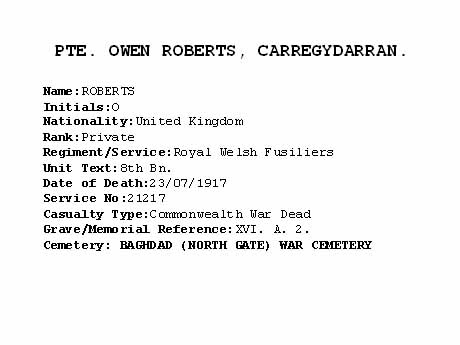
Owen Roberts' home-
The War Cementary in Baghdad where he was buried.
Rolls of Honour held at the Commission's Head Office commemorating by name all the Commonwealth casualities who died in Iraq during the two World Wars.
The War Cementary in Jerusalem where he was buried
The Cementary in France where he was buried-
Owen Williams
Owen Williams’ father
Owen Williams’ mother
Owen Williams' home-
The 'Death Plaque'
Penmynydd today
Owen Williams’ medals
Helles Cementary where he was buried.
According to his family he was killed while guarding a well.
